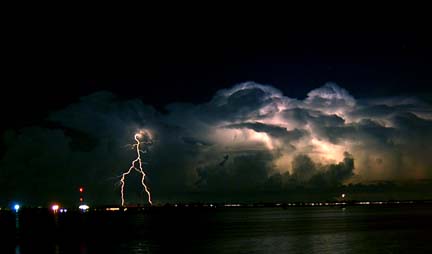Unprepared
After spending 12 hours without power last night due to a vicious thunderstorm, I suddenly realized how unprepared our family is for emergency situations. It wasn’t the fact that I missed the American Idol elimination I’d been waiting all season for; it was the fact that we couldn’t find the flashlight, my kids couldn’t light candles without burning themselves, and everyone just sort of lost all composure. Kudos to our pioneer ancestors who didn’t even have electricity.
I started thinking it might be time to make some plans “just in case” anything like that or worse happens again. God love me, I try to be organized with those types of things; however, for some reason, candles, lighter, batteries, etc., never seem to stay put. Of course, that might have something to do with the four children I have at home. Well, it is decided that if I’m at sorts with the emergency gear, there are likely many other women with the same problem – a blog post is born.
Resources You Can Trust
After researching the subject, I found the American Red Cross www.redcross.org and Homeland Security http://www.dhs.gov/index.shtm websites to be the most comprehensive and helpful. “Being prepared for emergencies is crucial at home, school, work and in your community,” says the ARC as the most important factor in emergency readiness. “Disaster can strike quickly and without warning. It can force you to evacuate your neighborhood, workplace or school or can confine you to your home. What would you do if basic services – water, gas, electricity or telephones – were cut off?” That was us last night. We all would like to think that bad things will never happen, but that is simply not a safe way to think and will not help you if something does go wrong.
Tips to “Live” By
- Prepare an Emergency Kit – stock it with at least three days of food, water and supplies. Also, include a first-aid kit, blankets, flashlights, matches/lighter, seasonal clothing, and a battery-powered radio. Make sure it is easily accessible and everyone knows the location. Check and restock the kit at least every six months.
- Make a Plan– Solidify a plan for emergency situations. Write the plan down and give a copy to everyone in the family. This plan should include a meeting location just outside your home and one outside of your neighborhood in case it is not safe to stay around your home, a fire escape route, contact information for a pre-selected person to be notified and kept informed about your needs and whereabouts. Take a minute now to call or e-mail an out-of-town friend or family member to ask him or her to be your family’s designated contact in the event of an emergency. Make sure everyone knows this plan. If you have small children, designate who will be responsible for their safety and care.
- Learn the Basics – First, make sure the adults in the family know the basic rules of an emergency like “stop, drop, and roll,” the low crawl, basic first-aid, CPR, etc.. Furthermore, teach your children the same; it might be the adults relying on children to save their lives. The American Red Cross offers classes like “The Red Cross Talk” and CPR certification programs for all ages. Keeping a list of emergency numbers for the Poison Control Center, your doctor, dentist, hospital, family members, and neighbors is a must for everyone, especially children and babysitters.
- Don’t Forget the Pets – “Dogs may be man’s best friend, but due to health regulations, most emergency shelters cannot house animals. Find out in advance how to care for your pets and working animals when disaster strikes. Pets should not be left behind, but could be taken to a veterinary office, family member’s home or animal shelter during an emergency. Also be sure to store extra food and water for pets. For more information, visit the Animal Safety section on www.redcross.org or visit the Humane Society Web site at www.hsus.org.”
Do the Work
Though these tips are just the most crucial, they will get you and your family (including mine) a head start at emergency readiness. Because every family is different, you need to customize your plan based on your specific circumstances. I hope you take this seriously and act on this information. I have set up an “emergency meeting” for my family and will be using How to Be Safe in Any Emergency Book: The Family Take Charge Book as a guide. And, just a side note, if you happen to have daughters who can’t live without the blow dryer and flat iron, either get battery power back ups or learn how to french braid. Be well; be safe.
Photo by Liquid Imagry on Deviantart.com
 Women's Life Link Be Well, Be Happy, Be YOU!
Women's Life Link Be Well, Be Happy, Be YOU!





